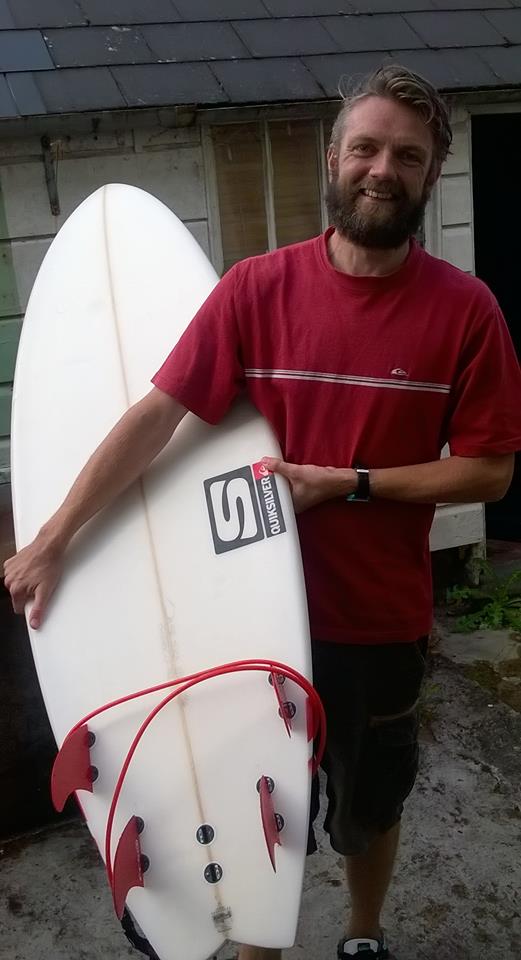Beautiful Boards!
Surfboards make me happy. Of course I love riding them and watching good surfing is something that I never tire of, and probably never will. But just looking at surfboards gives me so much stoke, this has been true to say for thirty years now, although in recent years I find that the boards I prefer are those that are based on the classic shapes of the 60's and 70's. While I love longboards, traditional designs and styles at least, I especially admire the boards that derive from the shapes that emerged when it all went short. The boards of this era just lend themselves so well towards style and grace, they have enough volume to be able to glide effortlessly, carving out long and drawn out turns, all connected with a fluidity that is so lacking in modern surfing.
These are the boards that I like, and this is the style of surfing that gives me the most stoke. For while I enjoy riding all types of surfboard, as described in the previous post, I like everything that there is to like, when it comes to the array of surfboards that come from Bing, Ryan Lovelace, Christenson and so many other board makers that demonstrate a distinct nod towards days gone past, adopting the styles, colours and sheer class of a different era, not to mention the shaping mastery and out-and-out craftsmanship that is somewhat lacking when it come to modern and more mainstream boards.
When I walk in to a good surf shop these days, I am drawn straight to the section where such boards live, better still, when I find a board shop that sells nothing but these boards, the latter are a rare entity, but they do exist. This is funny, because as a true grom of the eighties, I have in the past, had a tendency to go for the boards that are more main stream, as ridden by my favourite surfers of the time, a theme that continued for 20 years or more of my surfing life.
Maybe it's me getting older, or possibly it is because modern boards are rapidly becoming more a kin to sporting equipment, mass produced, highly designed with cutting edge performance in mind. The modern boards of this nature are by no means cheap, for they have price tags that often require a second glance, but I can't help but feel that they are moving towards consumer items that are intended to be used for a while, then replaced with the latest model. This might be a slightly cynical view, and I am not wholly against the modern board thing, per-say (as my previous post demonstrates). But truth be told, I much prefer the design aesthetic and style of boards that are based more upon the classic designs.
These are the boards that I like, and this is the style of surfing that gives me the most stoke. For while I enjoy riding all types of surfboard, as described in the previous post, I like everything that there is to like, when it comes to the array of surfboards that come from Bing, Ryan Lovelace, Christenson and so many other board makers that demonstrate a distinct nod towards days gone past, adopting the styles, colours and sheer class of a different era, not to mention the shaping mastery and out-and-out craftsmanship that is somewhat lacking when it come to modern and more mainstream boards.
When I walk in to a good surf shop these days, I am drawn straight to the section where such boards live, better still, when I find a board shop that sells nothing but these boards, the latter are a rare entity, but they do exist. This is funny, because as a true grom of the eighties, I have in the past, had a tendency to go for the boards that are more main stream, as ridden by my favourite surfers of the time, a theme that continued for 20 years or more of my surfing life.
Maybe it's me getting older, or possibly it is because modern boards are rapidly becoming more a kin to sporting equipment, mass produced, highly designed with cutting edge performance in mind. The modern boards of this nature are by no means cheap, for they have price tags that often require a second glance, but I can't help but feel that they are moving towards consumer items that are intended to be used for a while, then replaced with the latest model. This might be a slightly cynical view, and I am not wholly against the modern board thing, per-say (as my previous post demonstrates). But truth be told, I much prefer the design aesthetic and style of boards that are based more upon the classic designs.
Trevor and Ryan v.Bowls from Ryan Lovelace on Vimeo.

Comments
Post a Comment